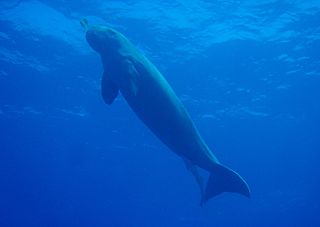Name
Kawadji formerly referred to a people, who inhabited Night Island and the coastal strip opposite. It now refers primarily to a modern aggregation of six tribes, collectively known by the same ethnonym kawadji which means 'people of the sandbeach' (pama malnkana). These tribes, the Umpithamu/Koko Ompindamo, Pakadji, Yintyingka, Otati, Umpila and Pontunj were the traditional owners and users of the coastal areas east of the Great Dividing Range of northeastern Cape York from Oxford Bay to Princess Charlotte Bay.

Night Island is part of the Great Barrier Reef Marine Park west of Cape Melville, Queensland, Australia. It lies east of Coen between the first three-mile opening and the second three-mile opening of the Barrier Reef about 100 km south-east of Lockhart River. It is part of the Islands North of Port Stewart Important Bird Area. The indigenous people of the island were the Kawadji.
An ethnonym is a name applied to a given ethnic group. Ethnonyms can be divided into two categories: exonyms and autonyms, or endonyms.
The Umpithamu, also once known to ethnographers as the Koko Ompindamo, are a contemporary Indigenous Australian people of the eastern Cape York Peninsula in northern Queensland. Norman Tindale, transcribing their ethnonym Umpithamu as Umbindhamu, referred to them as a horde of the Barungguan.
This page is based on this
Wikipedia article Text is available under the
CC BY-SA 4.0 license; additional terms may apply.
Images, videos and audio are available under their respective licenses.
The Ayapathu people, otherwise known as the Ayabadhu or Aiyaboto, were an Indigenous Australian group, living on the western side of the Cape York Peninsula in northern Queensland.
The Yintyingka, now extinct, were an Indigenous Australian people of central and eastern Cape York Peninsula.
The Pakadji people, also known by the southern tribal exonym as the Koko Yao, were an Indigenous Australian group of Cape York Peninsula in northern Queensland. The ethnonym Koko Ya'o is said literally to mean 'talk, speech' (koko/kuku) 'this way' (ya'o), though this has been questioned.
The Olkolo or Koko-olkola' are an Indigenous Australian people of central and eastern Cape York Peninsula in northern Queensland. According to Norman Tindale, they are to be distinguished from the Kokangol, higher up on the Alice River watershed.
The Otati, or Wutati, were an Indigenous Australian people of central and eastern Cape York Peninsula in northern Queensland, according to Norman Tindale, though the ethnonym may designate the same people as the Wuthathi.
The Lamalama are a contemporary Indigenous Australian people of the eastern Cape York Peninsula in northern Queensland. The term was formerly used as one of the ethnonyms associated with a distinct tribe, the Bakanambia.
The Tjungundji or Tjongkandji were an Indigenous Australian people of central and western Cape York Peninsula in northern Queensland.
The Pontunj, also called the Yankonyu, are a contemporary Indigenous Australian people of the eastern Cape York Peninsula in northern Queensland.
The Totj were an indigenous Australian people of far northern Queensland.
The Mutumui were an indigenous Australian people of northern Queensland.
The Walmbaria are an indigenous Australian people of Cape York Peninsula in northern Queensland.
The Unjadi (Unyadi) were an indigenous Australian people of the Cape York Peninsula of northern Queensland.
The Atjinuri were an indigenous Australian people of the Cape York Peninsula of Queensland.
The Ngathokudi (Ngadhugudi) were an indigenous Australian people of the state of Queensland. Their language was possibly a dialect of Uradhi.
The Kareldi were one or two indigenous Australian people of the state of Queensland. There were two groups that went by this name, the Garandi (Karandi) and the Kuthant. It's not clear if they constituted a single people or spoke the same language.
The Nggamadi were an indigenous Australian people of the Cape York Peninsula of northern Queensland.




